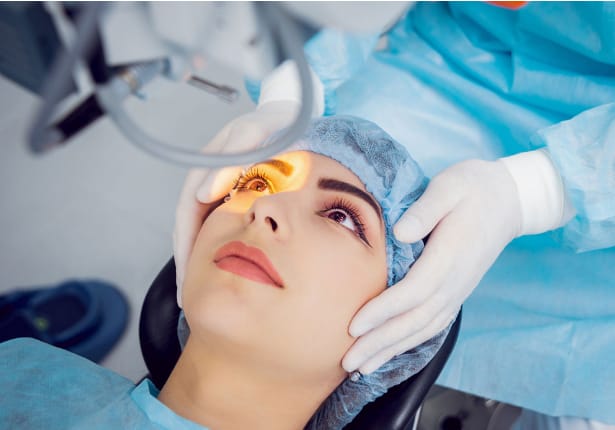How LASIK Corrects Vision Problems
LASIK works by reshaping the cornea, the clear front part of the eye, using a precise laser. This modification allows light entering the eye to focus directly on the retina, improving vision clarity. The procedure can address several vision problems:
- Myopia: Corrects nearsightedness
- Hyperopia: Corrects farsightedness
- Astigmatism: Improves irregular corneal curvature
Recovery is typically quick, with most patients noticing improved vision within a day or two. Preoperative assessments ensure if the cornea is suitable for reshaping.
Age and Stability of Vision Prescription
Ideal LASIK candidates are adults whose vision prescriptions have been stable for at least one year. Significant changes in prescription may indicate ongoing eye development or instability, which can reduce the long-term effectiveness of LASIK. Younger patients under 18 or individuals whose prescriptions fluctuate frequently are generally advised to postpone the procedure. Ensuring prescription stability helps surgeons achieve predictable results and decreases the likelihood of needing enhancement procedures in the future.
Corneal Thickness and Eye Health
Corneal thickness is a critical factor in determining LASIK eligibility. A sufficiently thick cornea is necessary to safely create a corneal flap and reshape tissue without compromising structural integrity. Individuals with thin or irregular corneas may face higher risks of complications such as ectasia or weakened corneal stability. Comprehensive eye exams, including corneal topography, are conducted to evaluate corneal health and thickness.
Existing Eye Conditions That May Affect Eligibility
Certain eye conditions can make LASIK unsafe or less effective. Patients with severe dry eye, keratoconus, glaucoma, or retinal disorders may not be ideal candidates. Eye infections or injuries must also be fully resolved before surgery. Chronic conditions affecting eye surface health can interfere with healing and visual outcomes. Eye specialists perform a thorough evaluation to detect these conditions and recommend alternatives if LASIK is ruled to be unsuitable.
General Health Considerations and Medications
Systemic health plays an important role in LASIK eligibility. Conditions like uncontrolled diabetes, autoimmune diseases, or vascular disorders can affect healing and increase surgical risks. Some medications, such as immunosuppressants, may temporarily prevent safe surgery. Patients are advised to provide a complete medical history and discuss ongoing medications with their ophthalmologist to ensure the procedure can be performed safely and effectively.
Lifestyle Factors and Visual Demands
Candidates lifestyle and occupational requirements are considered when evaluating suitability for LASIK. Individuals involved in high-risk activities or professions requiring precise distance vision may need additional discussion with their surgeon. Patients who spend long hours on digital devices or in environments with low humidity may experience increased dry eye post-surgery.
Bandra has become a preferred destination for advanced LASIK procedures due to its concentration of highly skilled ophthalmologists and multiple eye care facilities. The area offers access to the latest laser technologies, comprehensive diagnostic tools, and personalized treatment plans. Patients seeking Lasik treatment in Bandra benefit from experienced surgeons, modern clinics, and a well-organized healthcare infrastructure.
Consultation and Preoperative Assessments
A thorough preoperative evaluation is essential for determining candidacy. This includes:
- Visual acuity and prescription verification
- Corneal thickness and topography assessment
- Pupil size measurement
- Tear film evaluation
These tests help identify potential risks and allow surgeons to customize treatment plans. The consultation also provides an opportunity to discuss expectations, recovery timelines, and possible enhancements if needed.
Alternatives for Those Not Eligible for LASIK
Not all patients qualify for LASIK, but alternatives exist to improve vision. These include:
- Photorefractive Keratectomy (PRK): Suitable for thin corneas
- SMILE (Small Incision Lenticule Extraction): Minimally invasive and flapless
- Phakic Intraocular Lenses/IOLs: Ideal for high prescriptions
- Orthokeratology (Ortho-K): Nighttime lenses that temporarily reshape the cornea



